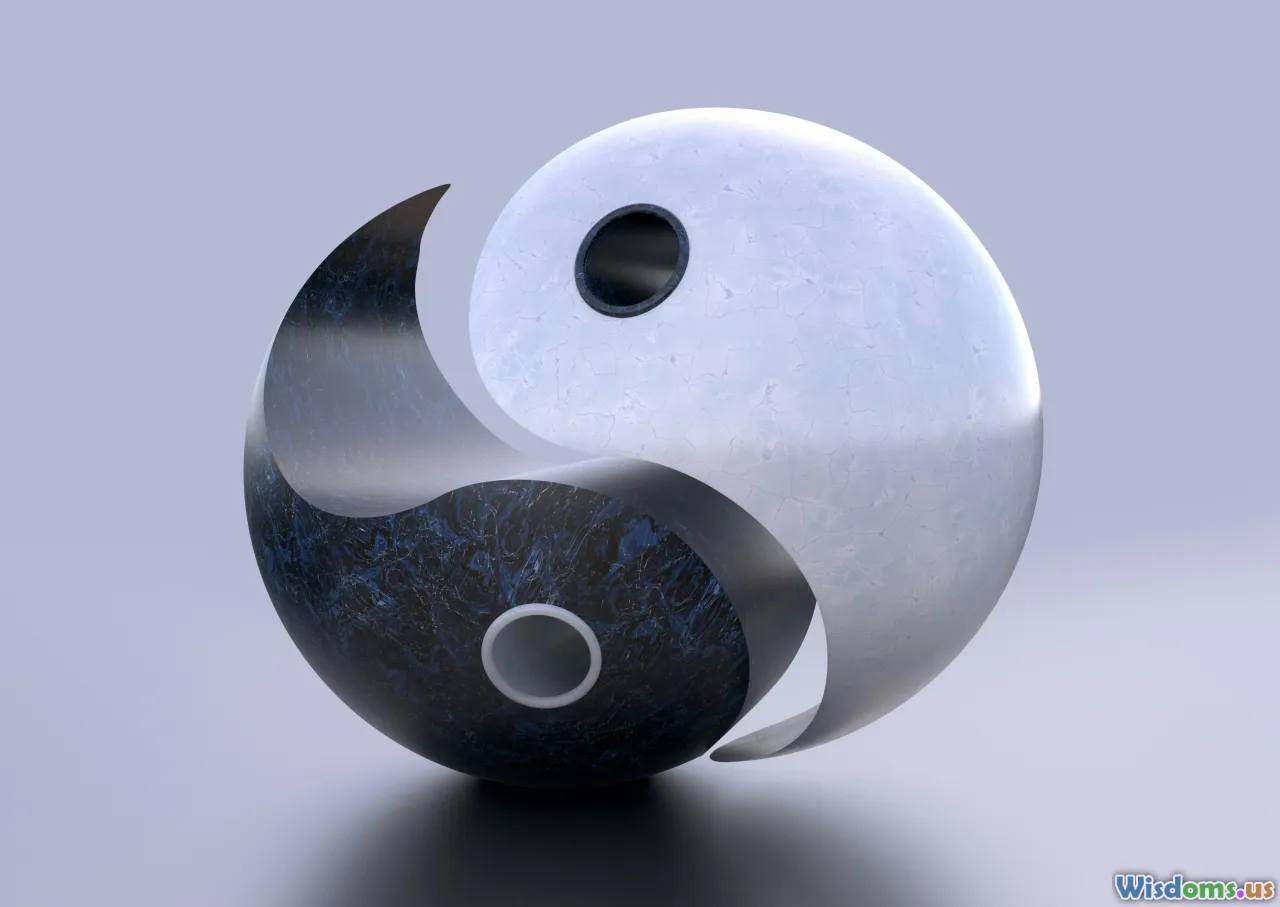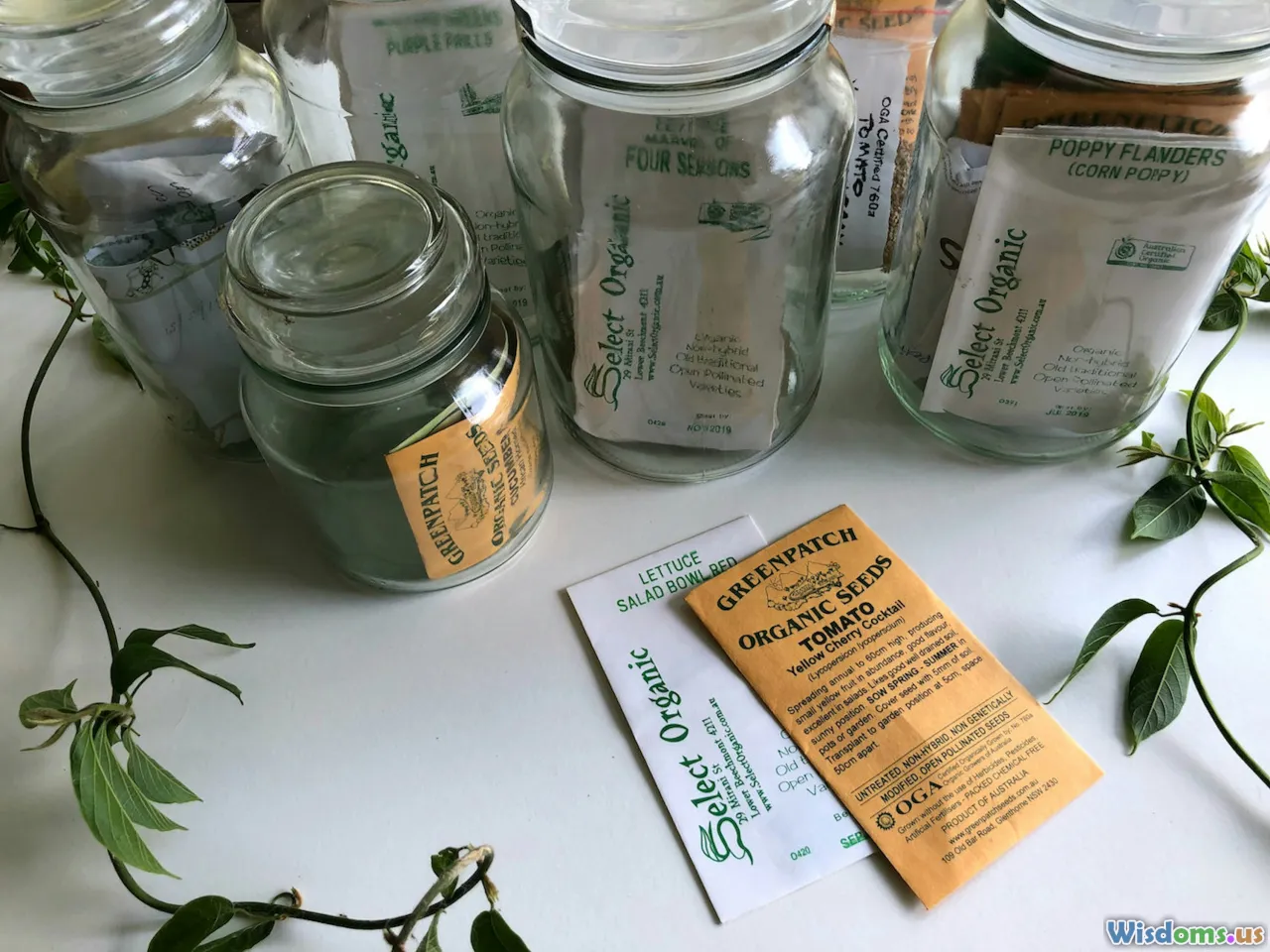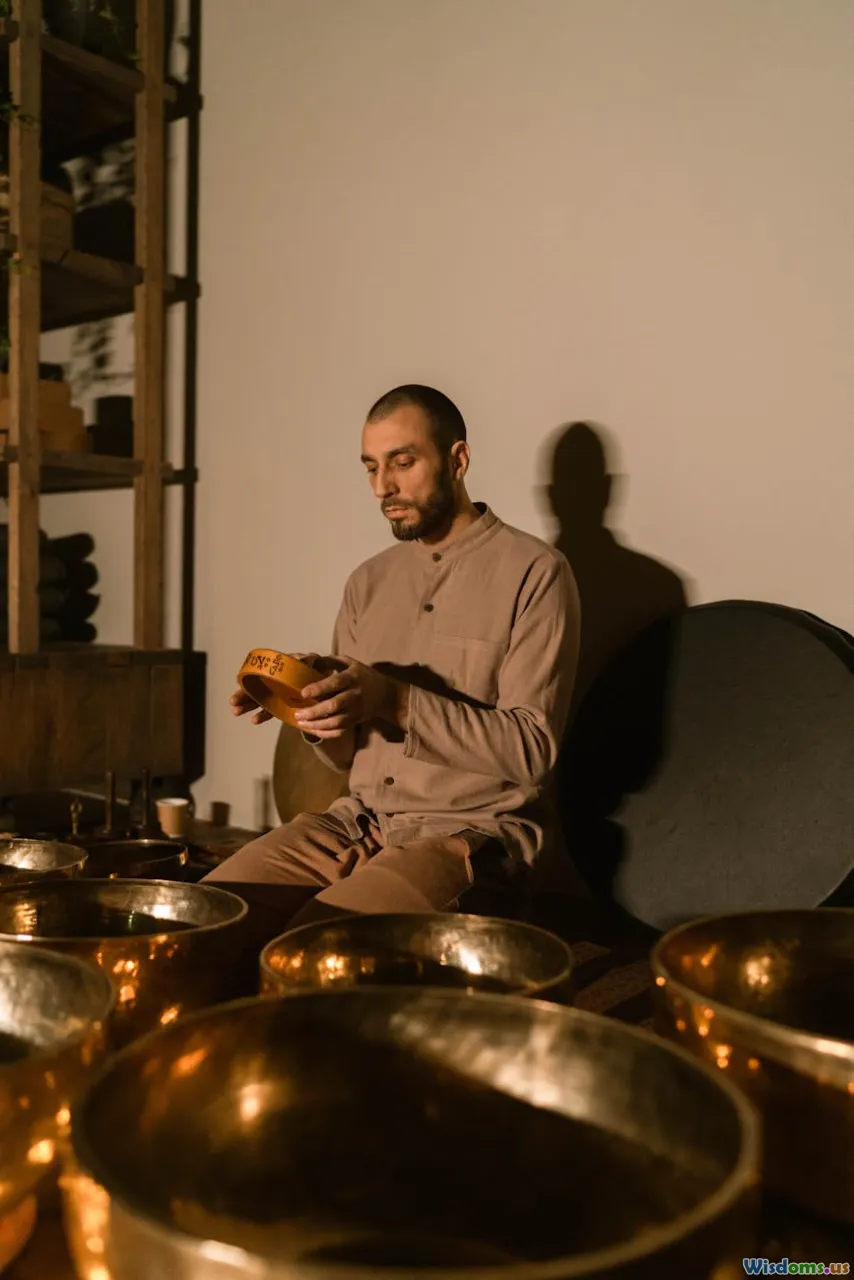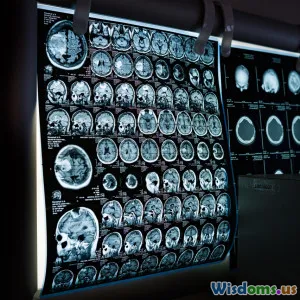
Comparing Eastern And Western Pharmacology Approaches In Pain Relief
14 min read A comparative analysis of Eastern and Western pharmacological strategies in managing pain relief. (0 Reviews)
Comparing Eastern and Western Pharmacology Approaches In Pain Relief
When discomfort strikes, how we seek relief often depends not only on personal preference but also on deep-rooted traditions and medical philosophies. Across the world, pain relief sits at the intersection of medical science, culture, and history—a mosaic best exemplified by the contrasting ways Eastern and Western pharmacology tackle the aching question: How can we best alleviate pain?
Let’s explore, in detail, how these two ancient-yet-evolving systems approach pain, highlighting their principles, therapies, medications, and outcomes.
Philosophies at the Core of Pain Management

At first glance, Eastern and Western pharmacological strategies may seem worlds apart. Each is grounded in distinct philosophies—one rooted in balancing natural energies, the other built upon anatomical science and pharmaceuticals.
Western Approach: Modern Western medicine is founded on the principles of evidence-based research, germ theory, and the biological mechanisms underlying disease. Pain is often seen as a symptom of injury, inflammation, or nervous system malfunction. Western practitioners focus on identifying a tangible physical cause and then targeting it with precise interventions, including pharmaceuticals and surgeries.
Eastern Approach: Eastern traditions, such as Traditional Chinese Medicine (TCM) and Ayurveda, view pain as an imbalance in the body’s vital energy (qi or prana) or the disruption of natural harmony. These philosophies underscore the interconnectedness of mind, body, and spirit. Hence, treatment emphasizes restoring balance through natural remedies, energy adjustments, and lifestyle modifications.
For example, where Western medicine may prescribe an anti-inflammatory for knee pain, an Eastern practitioner might examine an individual's tongue, pulse, and emotional state before recommending herbal teas, acupuncture, or dietary alterations.
Pharmaceutical Arsenal: Analgesics vs. Botanicals

Perhaps the most apparent difference concerns the medicines themselves. Western pharmacology leans heavily on synthesized drugs; Eastern medicine, on cultivated herbs and complex botanicals.
Western Painkillers:
- Non-steroidal anti-inflammatory drugs (NSAIDs): Ibuprofen and aspirin provide quick relief from inflammation and pain.
- Opioids: Used for moderate to severe pain, opioid medications (e.g., morphine, oxycodone) work by altering pain perception in the brain.
- Acetaminophen: A commonly used analgesic that reduces pain and fever but has no anti-inflammatory effect.
Such medications are potent, fast-acting, and well-studied. However, they can bring significant side effects, including gastrointestinal issues with NSAIDs and addiction risks with opioids.
Eastern Herbal Remedies:
- Turmeric: Used in Ayurveda for its anti-inflammatory and antioxidant properties. Studies have suggested curcumin, turmeric’s active compound, can help manage chronic pain.
- Salvia miltiorrhiza (Danshen): Utilized in TCM for cardiovascular disease and muscle aches, backed by evidence supporting anti-inflammatory action.
- Willow bark: The original source of salicin, chemically akin to aspirin, long employed in both TCM and traditional Western herbalism.
Eastern remedies often aim to correct systemic imbalances. While evidence for some herbal treatments is growing, clinical rigor may lag behind Western drugs. The challenge rests in standardization, dosage precision, and drug interaction research.
How Diagnosis Shapes Treatment Choices

Diagnostic methodology deeply influences prescribed treatments. Western medicine zeroes in on specific pathologies, while Eastern thinkers look for holistic imbalances.
In Western Clinics: Extensive use of imaging (MRI, X-ray), blood tests, and clinical examination isolates the exact pain generator. For instance, persistent back pain gets assessed for disc herniation, osteoarthritis, or nerve impingement.
- Example: A patient with sciatica symptoms might receive an MRI; if a herniated disc is found, treatment protocol may involve NSAIDs, corticosteroid injections, or surgery.
In Eastern Practices: Practitioners emphasize inquiry, observation, palpation, and listening. In TCM, tongue and pulse analysis play starring roles, with additional focus on lifestyle and emotional health.
- Example: The same back pain patient might undergo pulse diagnosis and be asked about digestion, sleep, and emotional stress. Treatment could combine acupuncture, moxibustion, cupping, and herbal formulas meant to move qi and reduce dampness or heat.
The diagnostic lens influences what counts as an effective intervention. Western clinicians value quantifiable data; Eastern practitioners seek subtle, subjective markers of wellness.
Acupuncture and Manual Therapies: Energetics vs. Anatomy

Manual therapies provide fertile ground for comparison.
Acupuncture (Eastern): Perhaps the most famous Eastern intervention, acupuncture involves inserting thin needles into specific points along the body’s meridians to harmonize qi. According to research, acupuncture stimulates endorphin release, reduces inflammation, and modulates the nervous system—bridging ancient theories with modern neurobiology.
- Example: Clinical trials have found acupuncture effective for chronic lower back pain, migraine, and osteoarthritis. In 2020, the British Medical Journal confirmed its benefits for tension-type headaches.
Physical and Manual Therapy (Western): Physical therapists use hands-on techniques—stretching, strengthening, and mobilization—to ease musculoskeletal pain based on anatomy and biomechanics.
- Example: For tension headaches, manual therapy may target trigger points or poor posture through evidence-based interventions.
The key difference rests in theory: energy flow versus physical function. Yet, outcomes often converge—both decrease pain and improve function.
Mind-Body Synergy: Meditation and Behavioral Approaches

Pain is never simply physical—the mind’s response is pivotal. Here, both East and West have independently underscored the value of addressing brain and body together, though via different avenues.
Eastern Mind-Body Practices: Meditation, yoga, tai chi, and qi gong form a foundational part of pain control, cultivating relaxation, resilience, and emotional balance. For example, mindfulness meditation, which has Buddhist roots, now enjoys wide acceptance globally after hundreds of clinical studies demonstrated its efficacy for chronic pain, anxiety, and depression.
- Example: A 2016 JAMA study showed that mindfulness-based stress reduction (MBSR) outperformed opioid painkillers in some cases of chronic low back pain, reducing distress and functional limitations.
Western Psychological Therapies: Approaches like Cognitive Behavioral Therapy (CBT), biofeedback, and acceptance and commitment therapy (ACT) help patients reframe pain perceptions, manage catastrophizing, and improve coping mechanisms.
- Example: CBT has become a gold standard for chronic pain, teaching skills to modify thought patterns and lifestyle habits—a 2012 systematic review confirmed its effectiveness for fibromyalgia, osteoarthritis, and neuropathic pain.
While rooted in different philosophies, both systems today increasingly recommend combinations of mind-body practices to address the multidimensional nature of pain.
Personalization and the Whole-Person Approach

One of the most significant shifts in twenty-first-century medicine is the recognition that effective pain relief should consider individual variations—what works for one may not work for another.
Eastern Tradition: Personalized medicine is integral to TCM and Ayurveda. Practitioners design bespoke herbal formulas and therapy plans based on constitution, lifestyle, and emotional well-being.
- Example: Two individuals with the same back pain diagnosis might receive entirely different herbal blends and acupuncture points according to their underlying energetic imbalances.
Western Movement Towards Personalization: Western medicine is increasingly embracing the idea of precision medicine. Genetics, lifestyle habits, and patient preferences are now considered when planning treatment, such as pharmacogenomics-guided prescribing for analgesics like codeine.
This convergence is especially apparent in integrative clinics that combine the strengths of both worlds—a movement fueled by patient demand for holistic, whole-person care.
Safety, Side Effects, and Evidence

Discussion of pain relief methods would be incomplete without considering safety. Robust evidence, side effect management, and risk balancing are core Western values—but here, too, Eastern systems offer cautions.
Western View: Medication labels come with extensive warnings—in part, due to rigorous clinical trials and post-marketing surveillance. The opioid crisis in the United States highlighted the dangers of over-prescription and dependence, sharpening regulatory oversight.
Eastern View: Herbal and energy-based therapies are generally perceived as milder and gentler, but not free from risk. For example, excessive use of Ma Huang (ephedra) has previously led to bans in Western countries due to hypertension and cardiovascular side effects. Herbal-drug interactions, unpredictability in plant potency, and lack of standardization pose real concerns.
A recent systematic review published in Pain Medicine found that some TCM pain formulas interact with blood thinners, emphasizing the need for collaboration and information-sharing among healthcare providers.
Seeing the Future: Integration and Complementarity

The as-yet untold story of pain management lies in integration—leveraging the best of both pharmacological worlds for safer, more effective relief.
Emerging Trends:
- Hospitals and clinics globally now offer both acupuncture and epidural steroid injections under one roof, personalizing strategies to each patient’s risks and goals.
- Clinical trials increasingly test herbal remedies—like capsaicin from chili peppers—both as natural alternatives and as adjuncts to conventional painkillers.
- Digital health platforms allow pain sufferers to track both yoga practice and medication dosages, generating real-world data for researchers.
Practical Advice for Patients Seeking Pain Relief:
- Always obtain an accurate diagnosis from a qualified health professional—blending therapies without proper guidance may increase risks.
- Discuss your use of supplements, herbs, or alternative therapies with your doctor to minimize harmful interactions.
- Explore multimodal pain management: movement, stress reduction, nutrition, and appropriate pharmacology.
- Consider second opinions from both a biomedical doctor and a qualified practitioner of TCM or Ayurveda for a truly comprehensive view.
The East-West divide in pain pharmacology, once sharply drawn, is now being traversed by curious researchers, open-minded clinicians, and informed patients. As science continues to investigate ancient remedies and refine pharmaceutical options, the future of pain management promises to be more flexible, safer, and responsive to the unique needs of every individual.
Rate the Post
User Reviews
Popular Posts

















